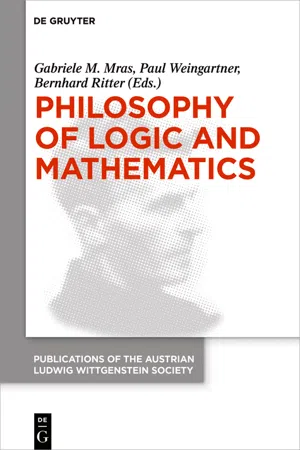Stewart Shapiro, The Ohio State University, Columbus (OH),
USA,[email protected] 1Introduction
Most philosophers are familiar with the metaphysical puzzle of the statue and the clay. A sculptor begins with some clay, eventually sculpting a statue from it. Are the clay and the statue one and the same thing? Apparently not, since they have different properties. For example, the clay could survive being squashed, but the statue could not. The statue is recently formed, though the clay is not, etc.
LEIBNIZ’S LAW is the thesis that identical things have the same properties. It follows from this that the statue and the clay are distinct, since they have different properties: one can survive being squashed, the other cannot; one is recently formed, the other is not, etc.
Many metaphysical puzzles then follow: When exactly does the clay become the statue? How can two co-located objects exist concurrently, etc.
Given the persistence of this puzzle, it would be rather surprising if the relatively nascent science of natural language semantics required taking a stance on the issue. Yet that is precisely what Godehart Link 1983’s highly influential analysis of THE COUNT/MASS DISTINCTION recommends. In particular, Link argues on the basis of examples like (1) that English draws a distinction between uncountable “stuff” and countable “things”.
| (1) | This ring is new, but the gold in the ring is old. |
Link’s argument is straightforward: The ring and the gold constituting it have different properties, even though the ring is completely constituted by the gold. It follows, from Leibniz’s Law, that the two are distinct. To quote Link 1983: 128 directly:1
Our guide in ontological matters has to be language itself, it seems to me. So if we have, for instance, two expressions a and b that refer to entities occupying the same place at the same time but have different sets of predicates applying to them, then the entities referred to are simply not the same. From this it follows that my ring and the gold making up my ring are different entities.
If providing an empirically adequate semantics for nouns requires postulating such a distinction, and if “our guide to ontological matters has to be language itself”, then it would appear that we have little choice but to accept that the ring and the gold are in fact different, as are the statue and the clay.
More to the point, since ‘ring’ is a count noun and ‘gold’ is a mass noun, Link infers that the denotations of the two nouns must be different sorts of things. Very roughly, rings are “things”, while gold is “stuff”.
More technically, Link distinguishes between ATOMIC INDIVIDUALS and MASS QUANTITIES. Atomic individuals are countable entities serving as the denotations of singular count nouns like ‘ring’. Plural nouns like ‘rings’ then denote PLURALITIES, or mereological sums of atoms. Atoms are related to pluralities, and pluralities to other pluralities, via the INDIVIDUAL PARTHOOD relation, represented as ‘⊑i’, and defined as (2), where ‘x ⊔i y’ is the individual sum of x and y.
| (2) | ∀x, y. x ⊑i y ↔ x ⊔i y = y |
Ordering the atoms via individual parthood results in an atomic join semilatice structure like the following, where arrows represent ⊑i.
Call this THE COUNT DOMAIN.
Mass quantities, in contrast, are related via MATERIAL PARTHOOD, represented as ‘⊑m’, and defined similarly to (2). Ordering mass quantities via material parthood results in a different, but similarly structured, semilattice. Call this THE MASS DOMAIN.
The count and mass domains are related via a homomorphism, a function h, mapping pluralities to mass quantities. If a is an individual (or a sum of individuals), then h(a) is the material stuff it is (or they are) made of. So if a is the notorious ring, then h(a) is the gold constituting it. Since h is a homomorphism, it preserves the material constitution of atomic individuals: if a ⊑i b, then h(a) ⊑m h(b). For example, if Link’s ring a is an individual part of his collection of rings b, then the gold constituting Link’s ring is a material part of that collection.
If Link’s ring and the gold constituting are located in different, though related, domains, then it is hardly surprising that they have different properties. After all, they would be different entities. As Link acknowledges, the resulting ontology is anything but parsimonious, from a purely metaphysical perspective.
[L]et a and b denote two atoms in A. Then there are two mo...


